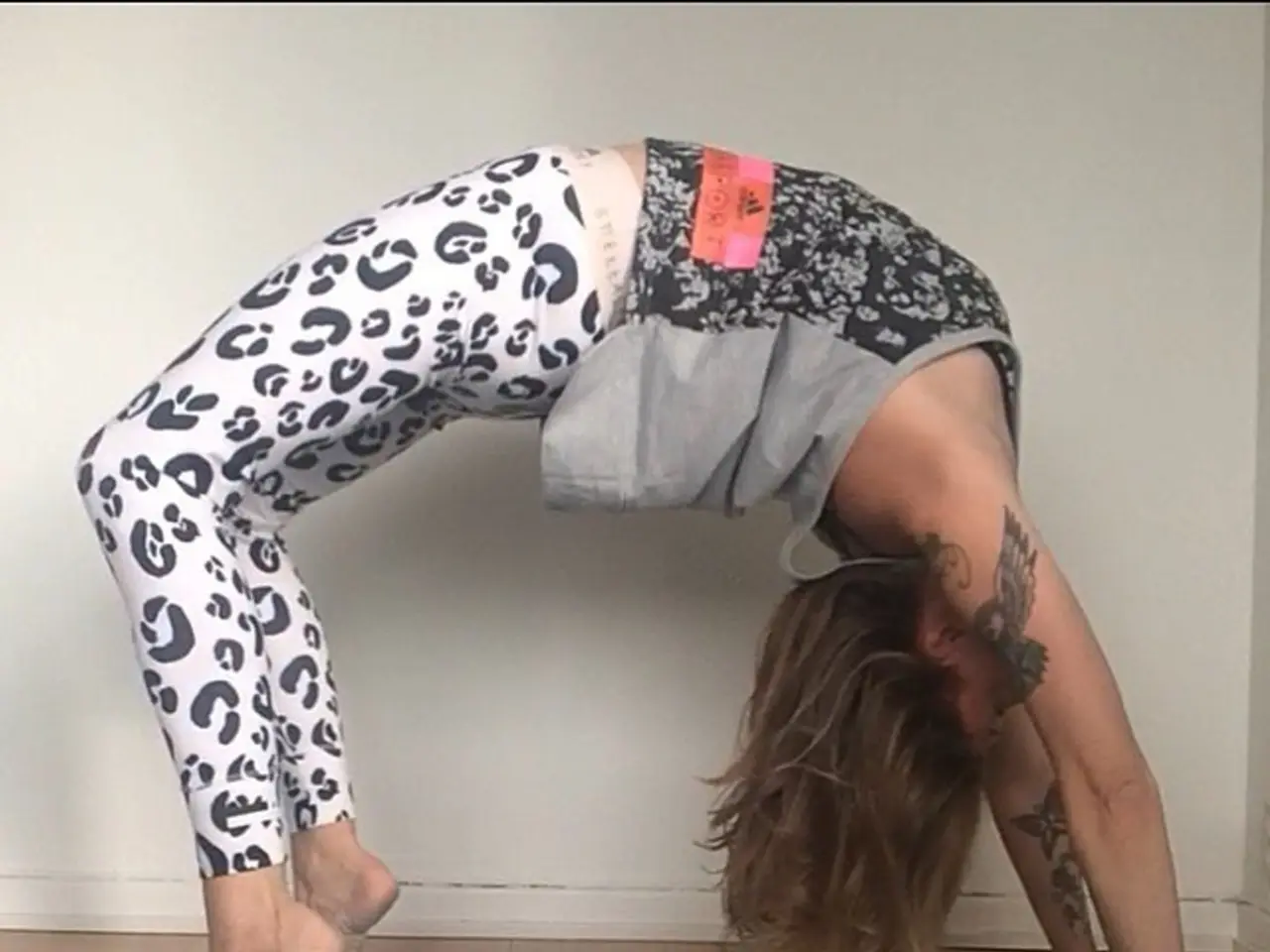Lotus Position (Padmasana) - Boosts concentration for meditation, induces tranquility, and fortifies hip flexibility.
The Lotus Pose, or Padmasana, is a traditional yoga posture deeply rooted in ancient yoga traditions. This cross-legged seated position, where each foot is placed on the opposite thigh, is often associated with spiritual enlightenment and is frequently used in meditative and breathing exercises.
Padmasana encourages a calm and focused state of mind, making it effective for meditation. Regular practice provides physical benefits such as strengthening the hip joints, improving posture, and increasing flexibility in the hip region. However, it is important to note that individuals suffering from sciatica or nerve-related issues, those with severe knee, hip, or ankle injuries, and people with chronic lower back pain should avoid practicing Padmasana.
For beginners or those with limited flexibility, starting with Ardha Padmasana (Half Lotus) or using props for support can be beneficial. Gradual flexibility is key, and forcing the knees into position should be avoided. Sitting in Padmasana before bedtime can help relax the mind and body, promoting better sleep.
Practicing Padmasana during early morning meditation can set a calm tone for the day. The pose stimulates the body's energy centers, or chakras, especially the Muladhara (Root Chakra) and Sahasrara (Crown Chakra). By balancing these energy points, Padmasana creates a sense of stability and connection between the physical and spiritual realms.
However, Padmasana can be challenging for beginners due to its hip and knee flexibility requirements. For those who find full lotus challenging, there are alternatives. Ardha Padmasana (Half Lotus Pose) is a gentler version that promotes pelvic stability and spinal alignment, preparing the body for deeper meditation.
Sukhasana (Easy Pose) is another suitable cross-legged seated posture for meditation, offering comfort and ease without intense hip flexibility required for lotus. Virasana (Hero Pose), a kneeling posture where you sit back on your heels, stretching the feet, ankles, and knees, is also a good alternative for meditation, especially for those who prefer kneeling positions.
For those seeking reclined variations, Matsyasana (Fish Pose) and its variations can be combined with lotus or done separately, but they are less about seated meditation and more about opening the chest and relaxing.
In addition, standing poses like Tadasana (Mountain Pose) and balancing poses like Vrikshasana (Tree Pose) can enhance calmness and concentration but are less typical substitutes for meditation seating.
In conclusion, Half Lotus (Ardha Padmasana), Easy Pose (Sukhasana), and Hero Pose (Virasana) are the primary and practical alternatives for meditation to substitute Padmasana depending on individual flexibility and comfort. Remember to warm-up the lower body before attempting Padmasana or its alternatives, and always listen to your body's needs.
[1] Source: https://www.yogajournal.com/practice/ardha-padmasana-half-lotus-pose [2] Source: https://www.yogajournal.com/practice/sukhasana-easy-pose [3] Source: https://www.yogajournal.com/practice/tadasana-mountain-pose [4] Source: https://www.yogajournal.com/practice/matsyasana-fish-pose [5] Source: https://www.yogajournal.com/practice/virasana-hero-pose
- The Lotus Pose, a yoga exercise deep-rooted in ancient traditions, is often associated with spiritual enlightenment and is used in meditative and breathing exercises.
- Regular practice of the Lotus Pose provides physical benefits such as strengthening the hip joints, improving posture, and increasing flexibility in the hip region.
- However, people with certain health-and-wellness issues, like sciatica, severe knee, hip, or ankle injuries, or chronic lower back pain should avoid practicing the Lotus Pose.
- For beginners or those with limited flexibility, starting with Ardha Padmasana (Half Lotus) or using props for support can be beneficial.
- Gradual flexibility is key, and forcing the knees into position should be avoided to prevent potential injuries.
- Sitting in the Lotus Pose before bedtime can help relax the mind and body, promoting better sleep.
- Practicing the Lotus Pose during early morning meditation can set a calm tone for the day, stimulating the body's energy centers or chakras.
- For those who find full lotus challenging, alternatives such as Ardha Padmasana (Half Lotus Pose), Sukhasana (Easy Pose), and Hero Pose (Virasana) can be used, offering comfort and easing the requirement for intense hip flexibility.




